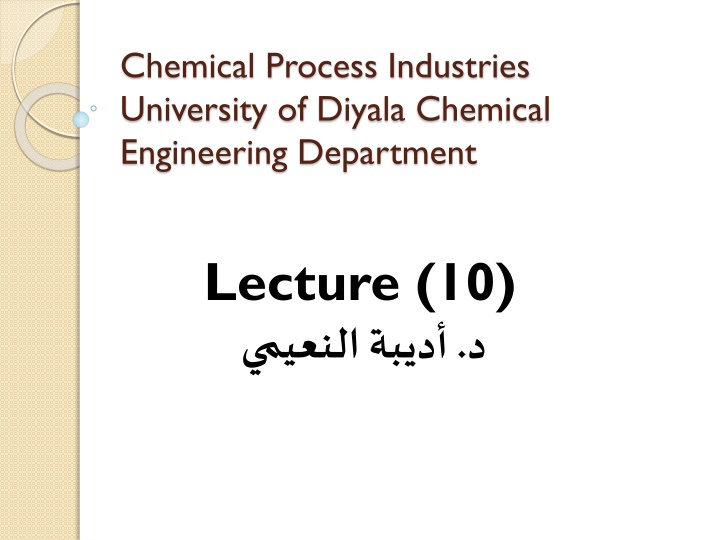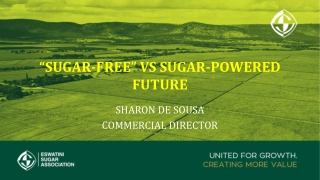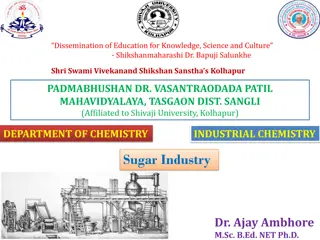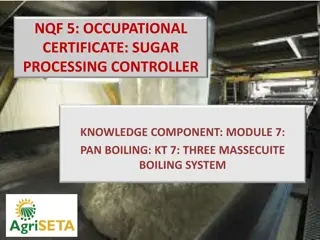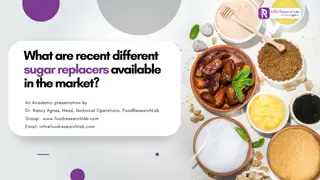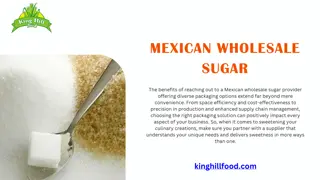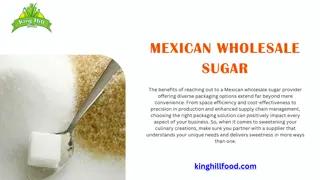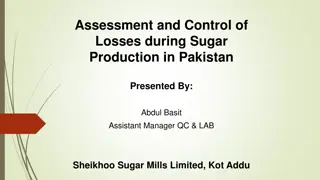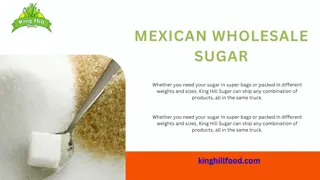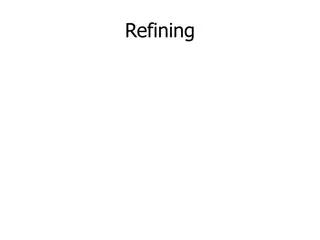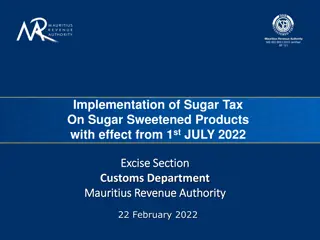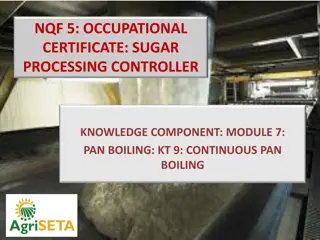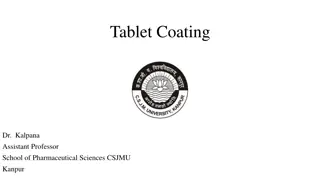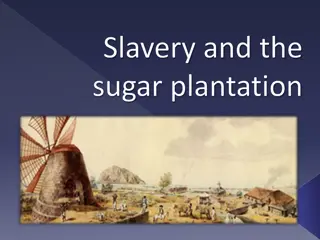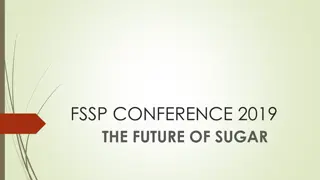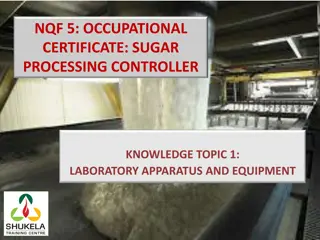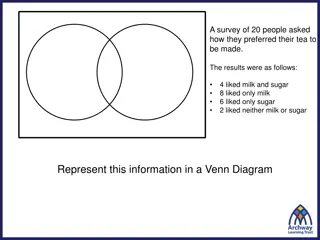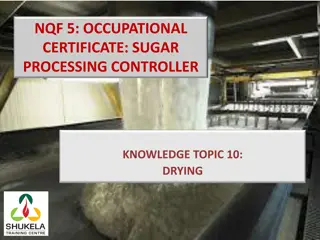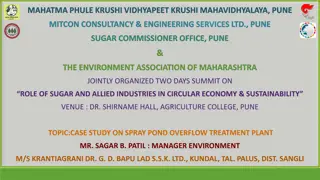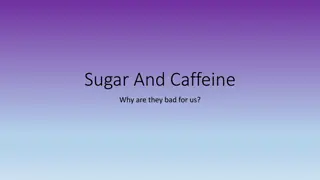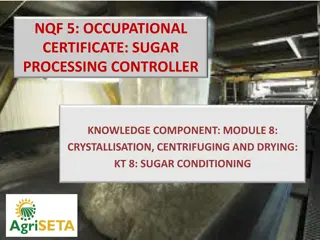Sugar Industry Processes and Refining Techniques
The sugar industry involves intricate processes like cone sugar production, sugar extraction, juice purification, evaporation, crystallization, and sugar refining for both cone sugar and beet sugar. Cone sugar is harvested, washed, and undergoes juice extraction, diffusion, purification, evaporation, and centrifugation. On the other hand, beet sugar involves washing, slicing, diffusion, juice purification, evaporation, and standard liquor processing. The sugar refining process includes affination, melting, and crystal separation using various techniques. Each step contributes to the production of high-quality sugar products.
Uploaded on Mar 08, 2025 | 1 Views
Download Presentation

Please find below an Image/Link to download the presentation.
The content on the website is provided AS IS for your information and personal use only. It may not be sold, licensed, or shared on other websites without obtaining consent from the author.If you encounter any issues during the download, it is possible that the publisher has removed the file from their server.
You are allowed to download the files provided on this website for personal or commercial use, subject to the condition that they are used lawfully. All files are the property of their respective owners.
The content on the website is provided AS IS for your information and personal use only. It may not be sold, licensed, or shared on other websites without obtaining consent from the author.
E N D
Presentation Transcript
Chemical Process Industries University of Diyala Chemical Engineering Department Lecture (10) .
Sugar Industry Sugar industry:- 1. Cone sugar 2. Beet sugar
Cone sugar:- 1) Agriculture. 2) Harvesting. 3) Preparation of cone for milling: washing the cone by hot water, before milling. 4) Juice extraction: the crushed and shredded cone passes through a series of three horizontal rollers(mill). The first mill extract 60-70% and the remaining mills take out 22-24%.
5) Diffusion: sucrose extraction using hot water (50-75%) from the open ruptured cells (4-5 stages). Sucrose extraction from a mill diffusion system average 97% compared to 90-94% with a straight milling system. 6) Juice purification: removal of impurities by lime & heat ( clarification or defection). The juice leaving clarifier is a clear brownish liquid (85% NaOH).
7) Evaporation: The clarified juice concentrated to ( 65% solid) clear heavy syrup, in multiple effect . 8) Crystallization: in vacuum pan (single effect evap.) the density of the syrup is raised to 78-80% Brix. (Brix= % sucrose in the sol). 9) Centrifugation: The crystals are separated from mother liquor. 10) Packaging & warshuing of raw sugar.
Sugar refining: 1) Affination and melting: Affination is first step of refining consists of removing the film of molasses (in which a large portion of the impurities are contained from the surface of the raw sugar crystal). The process involves the mixing of raw sugar with sat. sugar syrup (72- 75%) at about 170 oF (sat. syrup is used to avoid dissolving of raw sugar ). The mixture is centrifuged to separate crystals from syrup, then washing crystal with hot water. The sugar is melted or dissolved in water to a deuity of 55-60 oBrix. The liquor from the melter is screened to remove non sugar materials such sand, stones, wood, cone fiber, and lint.
Beet sugar: 1) Agricultural. 2) Washing. 3) Slicing: the washed beet are sliced into thin V- shaped cassettes by shaped knives. 4) Diffusion: with water at 60-80 oC. 5) Juice purification: removing nonsugar impurities by series of processes using lime & CO2 (carbonation) & SO2 (sulfitation), and crystallization. 6 6) Evaporation and standard liquor: The thin juice ( 15% solid) discharged from filter process after clarification is evaporated to thick juice (50-65% solids) in multiple-effect evaporators.
7) Crystallization, centrifuging, and Drying: similler to those in cane sugar refinery, and result in a white granulated sugar comparable in quality to those of refined cane sugar.
